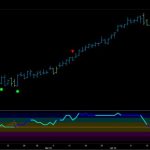Customizing Your Financial Dashboard: The Key to Efficient Market Monitoring
Monitoring the financial markets can be a daunting task, with vast amounts of data and information bombarding investors daily. In order to stay informed and make well-informed decisions, creating a customized dashboard for tracking market movements and key financial indicators is essential. By tailoring your dashboard to your specific needs and preferences, you can streamline your market monitoring process and ensure you are focusing on the most relevant information. In this article, we will explore the benefits of customizing your financial dashboard and provide tips on how to create an efficient and effective monitoring tool.
The Power of Customization
One of the main advantages of customizing your financial dashboard is the ability to focus on the information that is most important to you. By selecting and organizing the data that matters most, you can avoid information overload and ensure you are only tracking the key metrics that align with your investment goals and strategies. This personalized approach allows you to stay focused and make timely decisions based on the most relevant market information.
Furthermore, a customized dashboard enables you to track a wide range of assets and markets in one centralized location. Whether you are interested in stocks, bonds, commodities, or currencies, you can tailor your dashboard to include the specific assets you want to monitor. This consolidated view provides a comprehensive snapshot of your portfolio and the overall market, allowing you to quickly assess performance and identify trends or opportunities.
Tips for Creating an Efficient Dashboard
When creating your financial dashboard, consider the following tips to ensure it is efficient and effective:
1. Define Your Objectives: Start by outlining your investment objectives and the key metrics you want to track. Whether you are focused on growth, income, or diversification, your dashboard should align with your goals and priorities.
2. Select Relevant Data: Choose the most relevant data points and indicators that will help you make informed decisions. This may include stock prices, market indices, sector performance, economic indicators, and news headlines.
3. Organize Information: Structure your dashboard in a logical and user-friendly way, grouping related information together and using visual aids such as charts and graphs to highlight trends and patterns.
4. Utilize Alerts and Notifications: Consider incorporating alerts and notifications for important events or price movements to stay informed in real-time and take prompt action when needed.
5. Regularly Review and Update: Continuously review and update your dashboard to ensure it remains current and meets your changing needs. Regularly assess the performance of your investments and adjust your dashboard accordingly.
In conclusion, customizing your financial dashboard is the key to efficient market monitoring. By tailoring your dashboard to your unique requirements and preferences, you can focus on the most relevant information, track a wide range of assets, and make well-informed investment decisions. With the right tools and strategies in place, you can stay ahead of market trends and ensure your portfolio is positioned for success. Start customizing your dashboard today and take control of your financial future.



